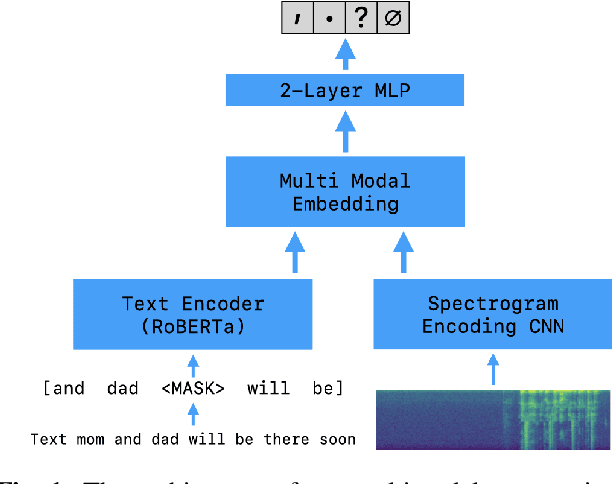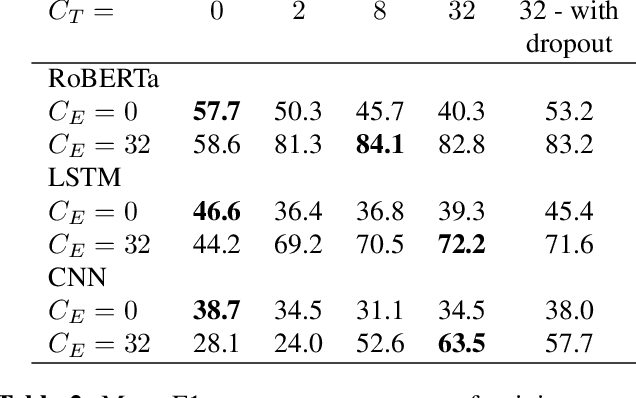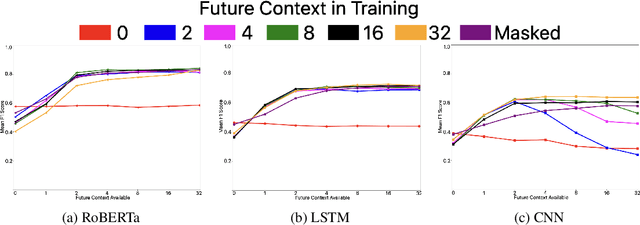Multimodal Punctuation Prediction with Contextual Dropout
Paper and Code
Feb 12, 2021



Automatic speech recognition (ASR) is widely used in consumer electronics. ASR greatly improves the utility and accessibility of technology, but usually the output is only word sequences without punctuation. This can result in ambiguity in inferring user-intent. We first present a transformer-based approach for punctuation prediction that achieves 8% improvement on the IWSLT 2012 TED Task, beating the previous state of the art [1]. We next describe our multimodal model that learns from both text and audio, which achieves 8% improvement over the text-only algorithm on an internal dataset for which we have both the audio and transcriptions. Finally, we present an approach to learning a model using contextual dropout that allows us to handle variable amounts of future context at test time.
 Add to Chrome
Add to Chrome Add to Firefox
Add to Firefox Add to Edge
Add to Edge